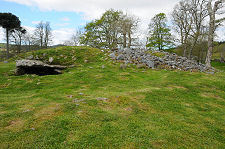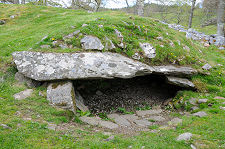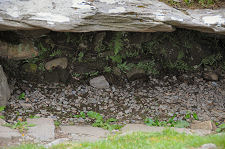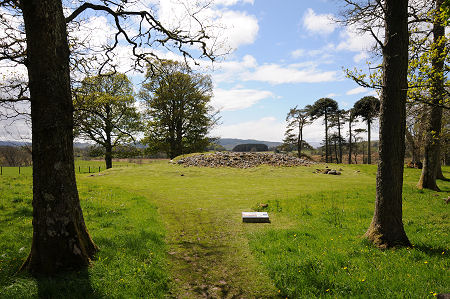 Approaching the Cairn from the Road |
Dunchraigaig Cairn stands a little to the west of the A816 at a position a mile and a half south of the village of Kilmartin. It is one of the large number of monuments that lie within the area of Kilmartin Glen. These have their origins in a number of different eras, but most, like Dunchraigaig Cairn, were placed here in the distant past.
The best clue to the location of the cairn is a brown tourist sign pointing visitors to a parking area on the east side, or opposite, side of the main road. From here you carefully cross the road and make your way though a hundred metres or so of a pleasantly open copse of trees to the cairn itself.
The most striking feature of the cairn is the large stone cist on its southern side, or your left as you approach. This seems to have been constructed by digging a pit, lining the walls with stones, and placing the largest stone available on the top as a capstone. Today the capstone remains roughly in place, but the upper part of the southern lining wall has gone, allowing a view into the interior of the pit. The result is to give the impression of a doorway into an underground chamber, but this is misleading, and the "chamber" only goes as far as the northern wall of the pit.
On 31 May 2021 it was announced that a number of prehistoric animal carvings had been identifed at Dunchraigaig Cairn, a hugely significant find that rewrites the story of rock art in Scotland. They were found on the underside of the capstone of the cist, which appears in several of the images we show on this page. The slightly frustrating things is the sense that if we'd gone just slightly closer or used a slightly different angle when we took our photos in 2013, then we might have seen the animal carvings back then!
Dunchraigaig Cairn was excavated in 1864 by two churchmen. The Reverend Reginald Mapelton was a local minister, while Canon William Greenwell was the librarian of Durham Cathedral. Canon Greenwell was an acknowledged expert in prehistoric monuments, and author of the influential book "British Barrows". He also had a trout fly named after him.
Traces of between eight and ten people were recovered from the large pit, which may originally have stood at the centre of the cairn. Two other burial cists were also uncovered in the cairn, but it is no longer possible to see traces of them. As well as burned human bones, the 1864 excavation found two pots and other pottery, plus a flint knife, an axe head and other tools. All the finds recovered from the cairn have been lost, so the bones discovered here have never been radiocarbon dated.
A short distance to the north of Dunchraigaig cairn are the Baluachraig cup and ring marks, a form of ancient rock art, while not far to the south are the Ballymeanoch stones.
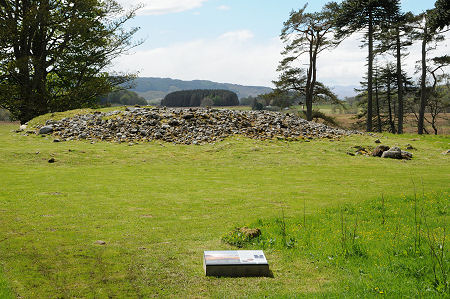 Full View of Dunchraigaig Cairn |
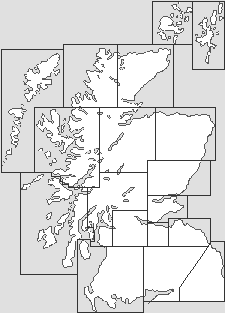
|
|
|
Visitor InformationView Location on MapGrid Ref: NR 833 968 www.historicenvironment.scot HES: Cairn Web Page Open all year and admission is free. What3Words Location: ///canoe.wool.residual |
 Seen from the North |
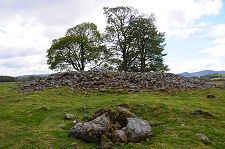 The Cairn from the North-East |
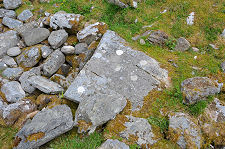 Possible Capstone? |

